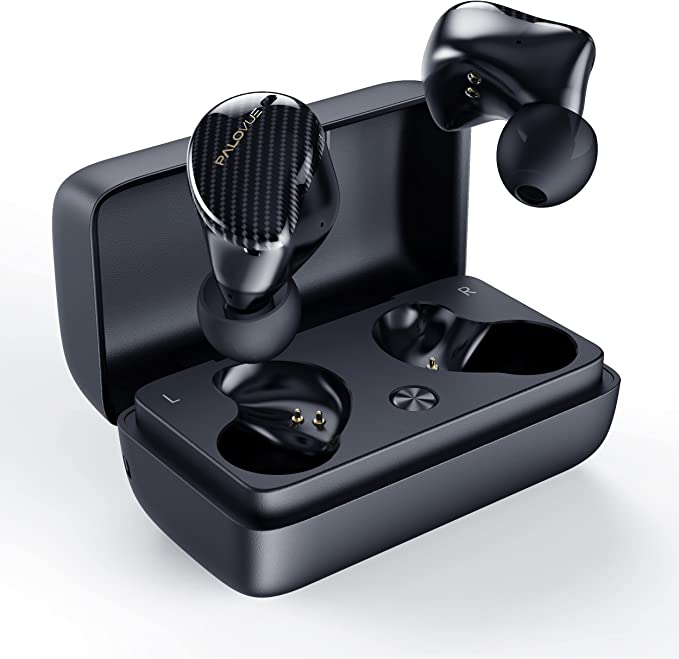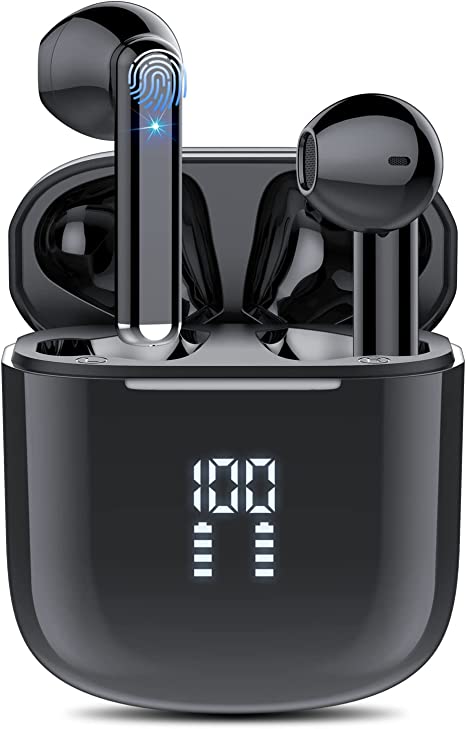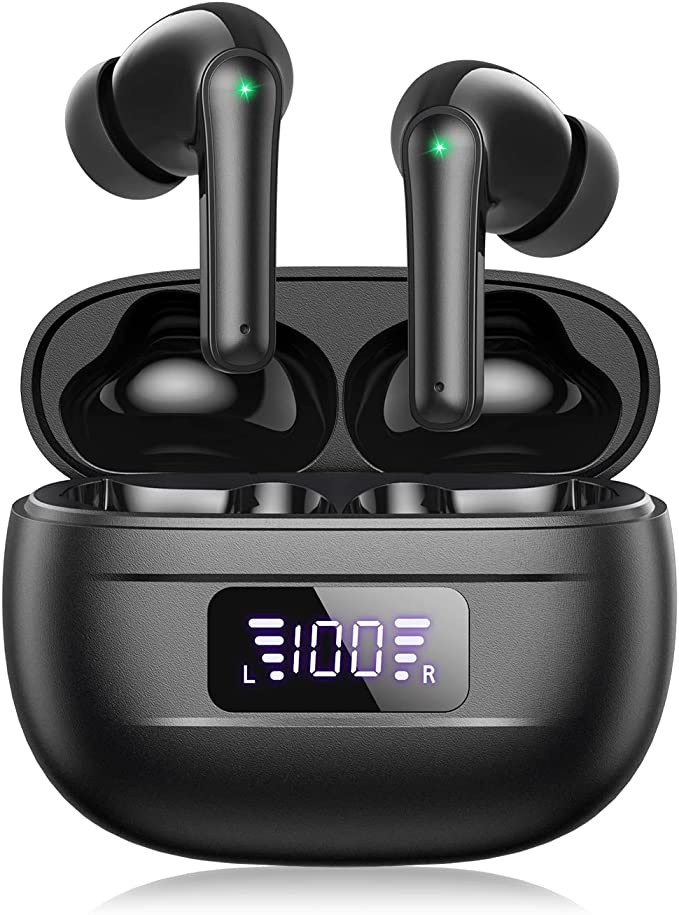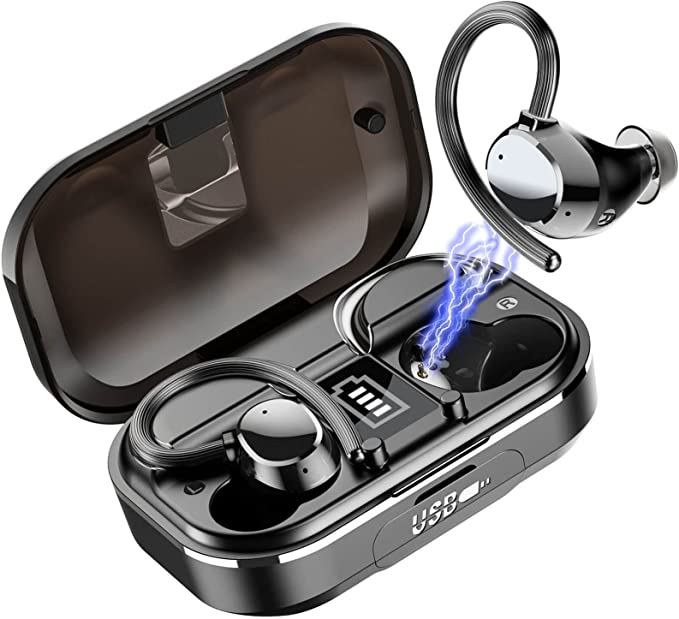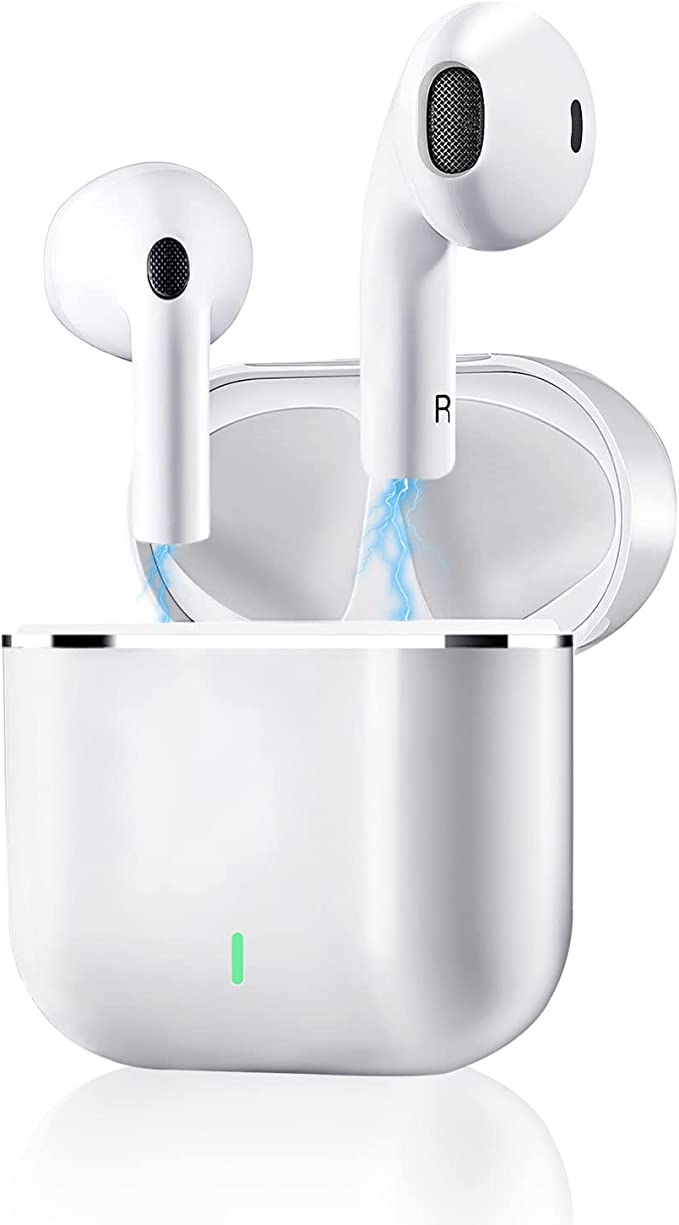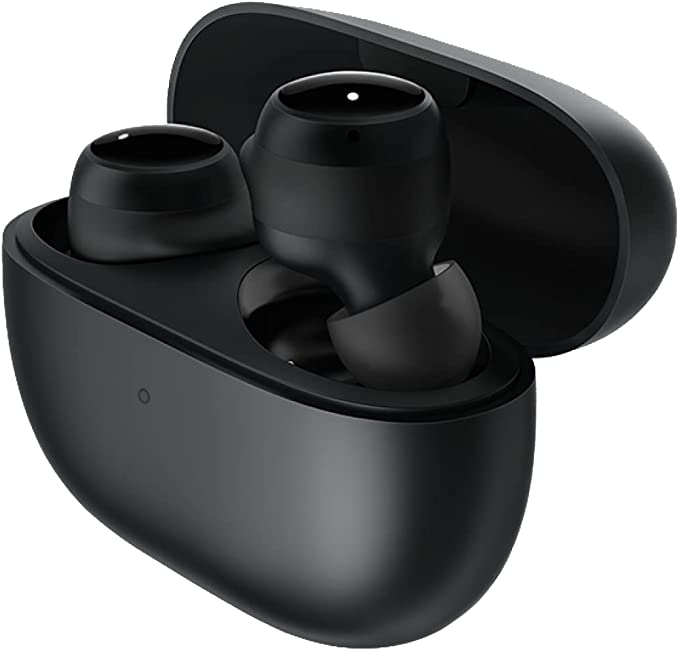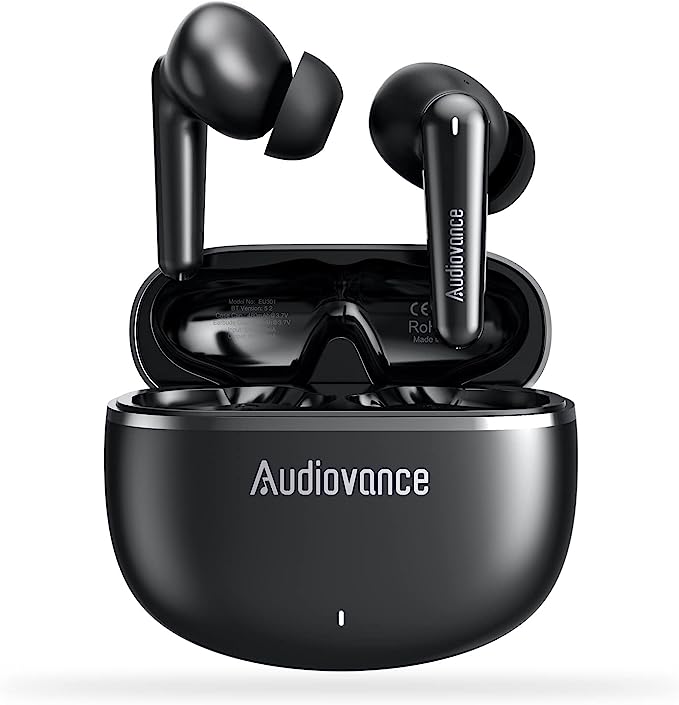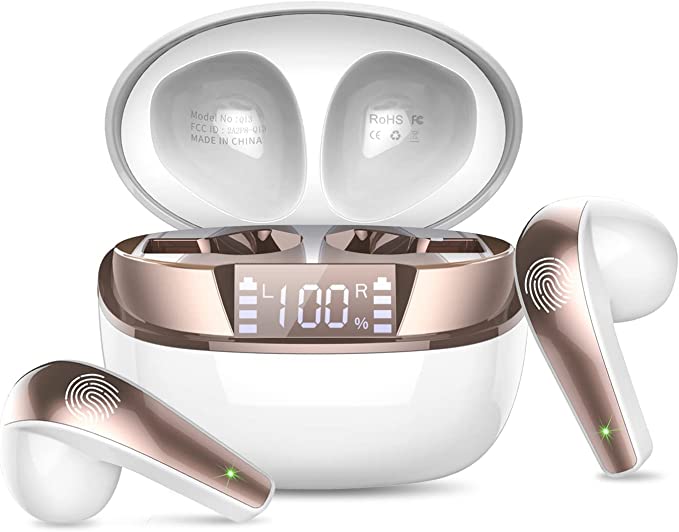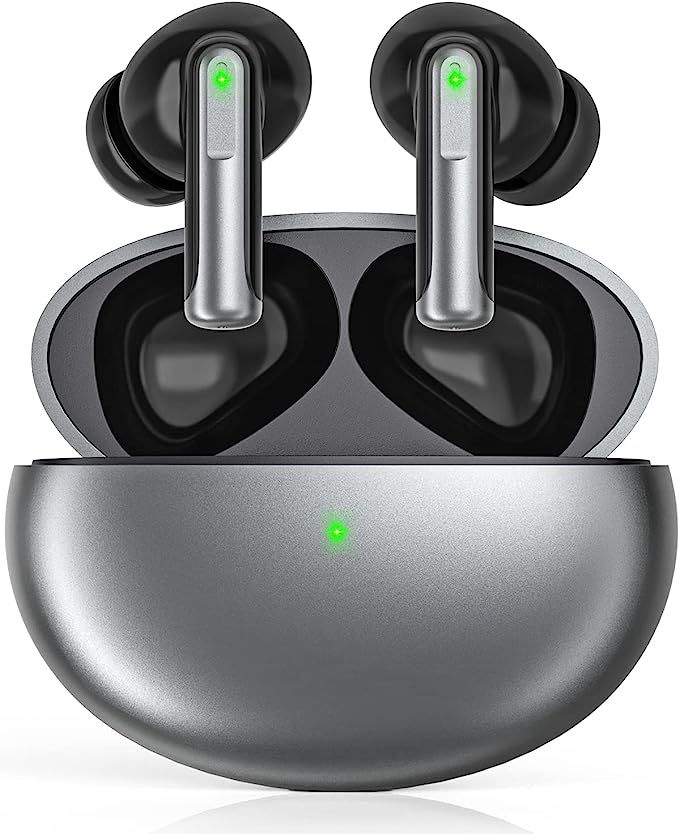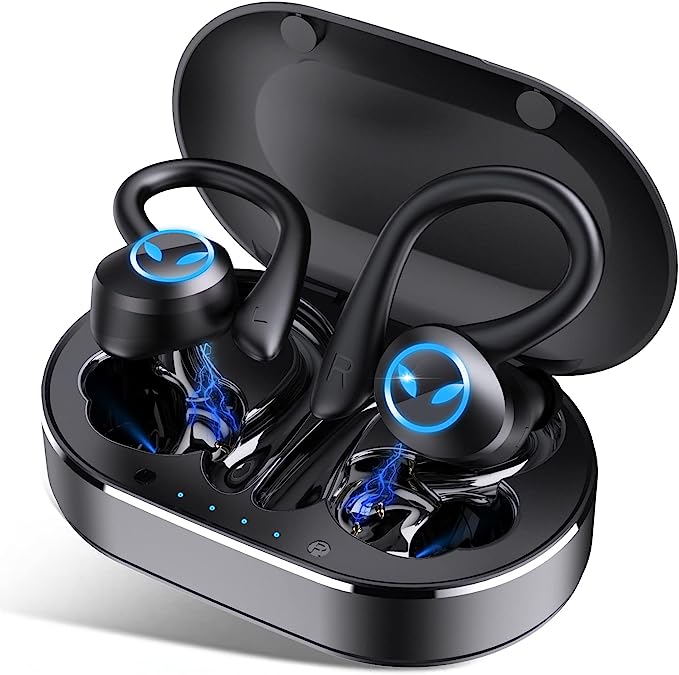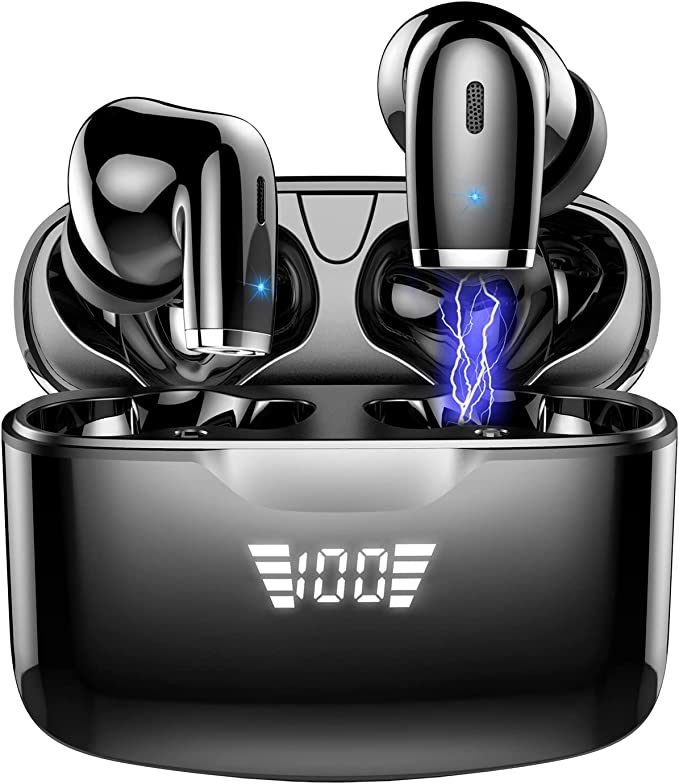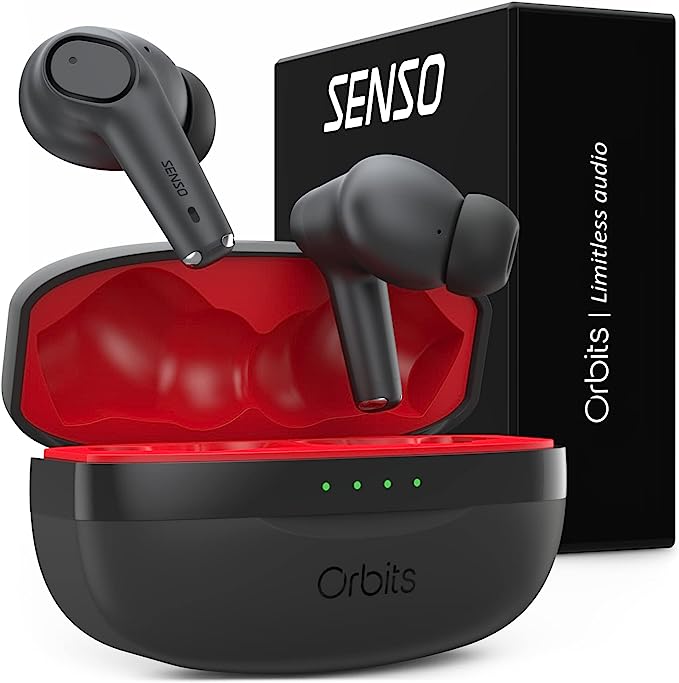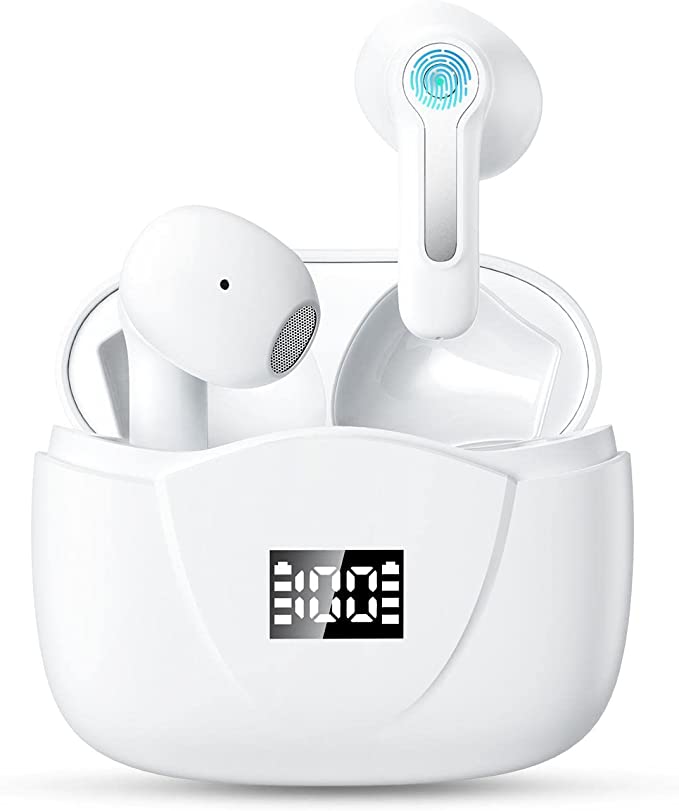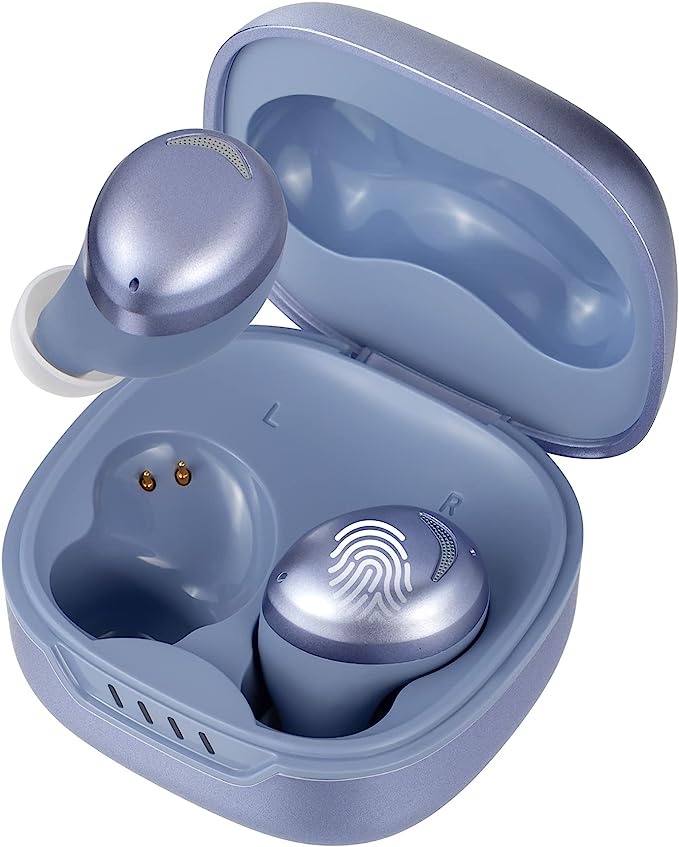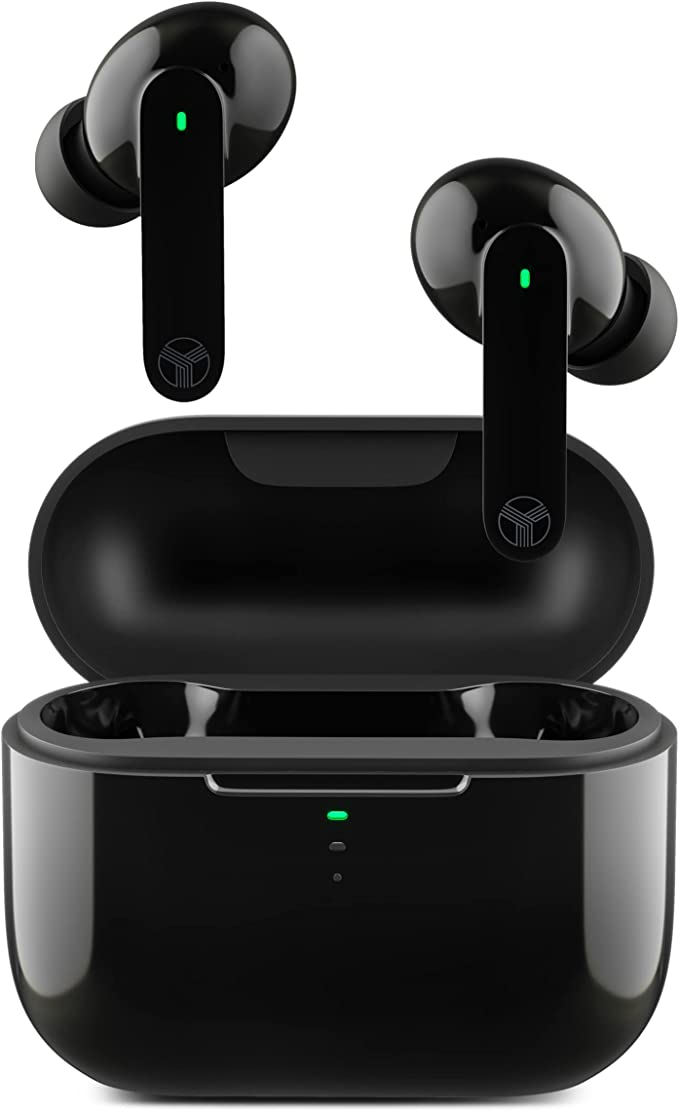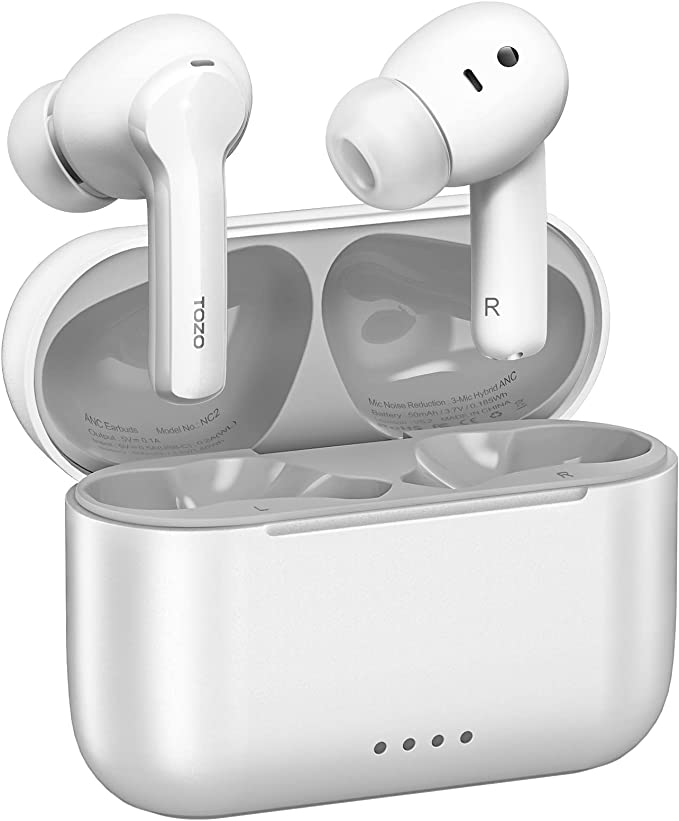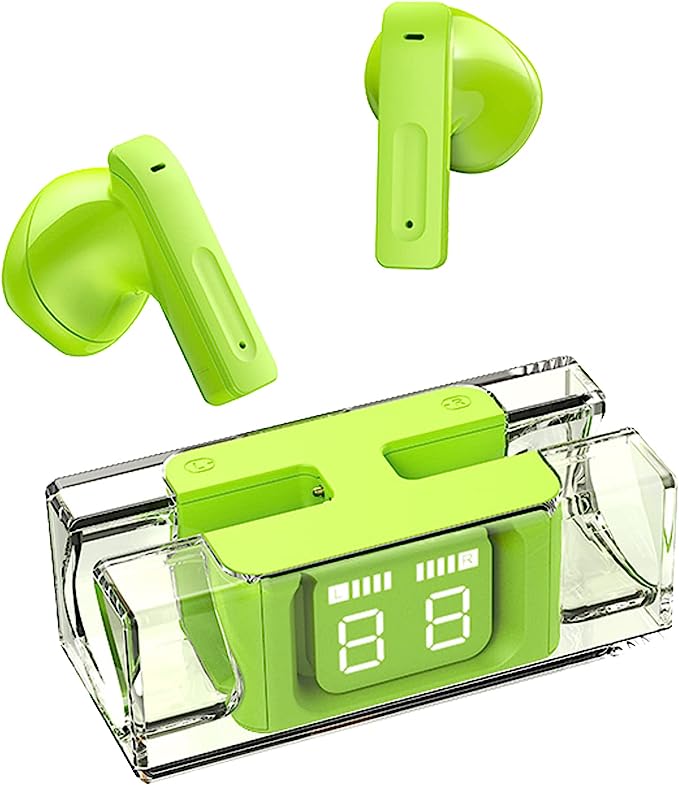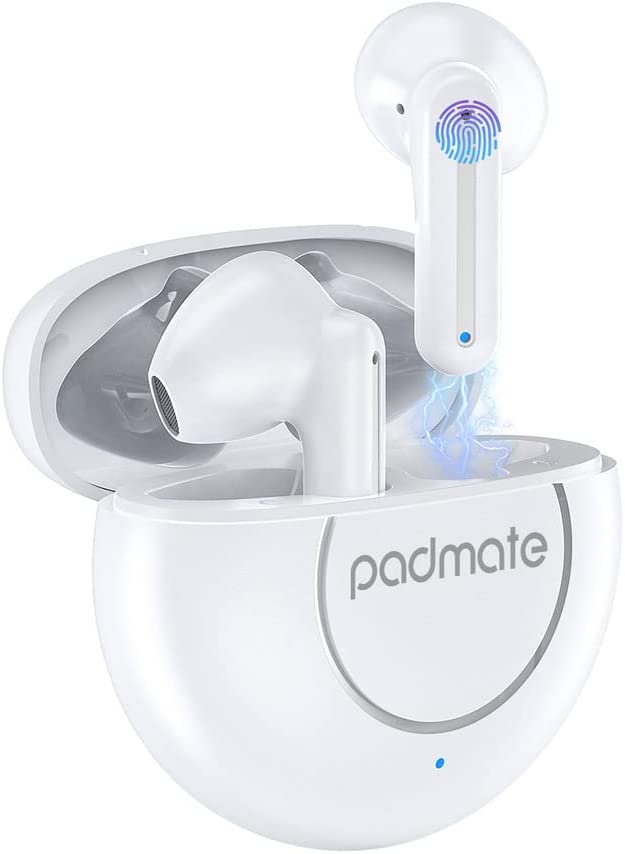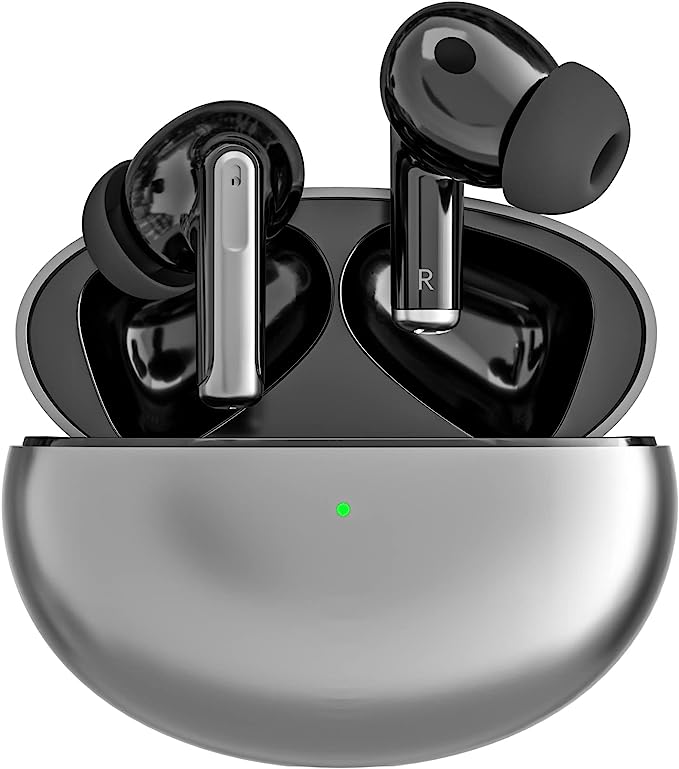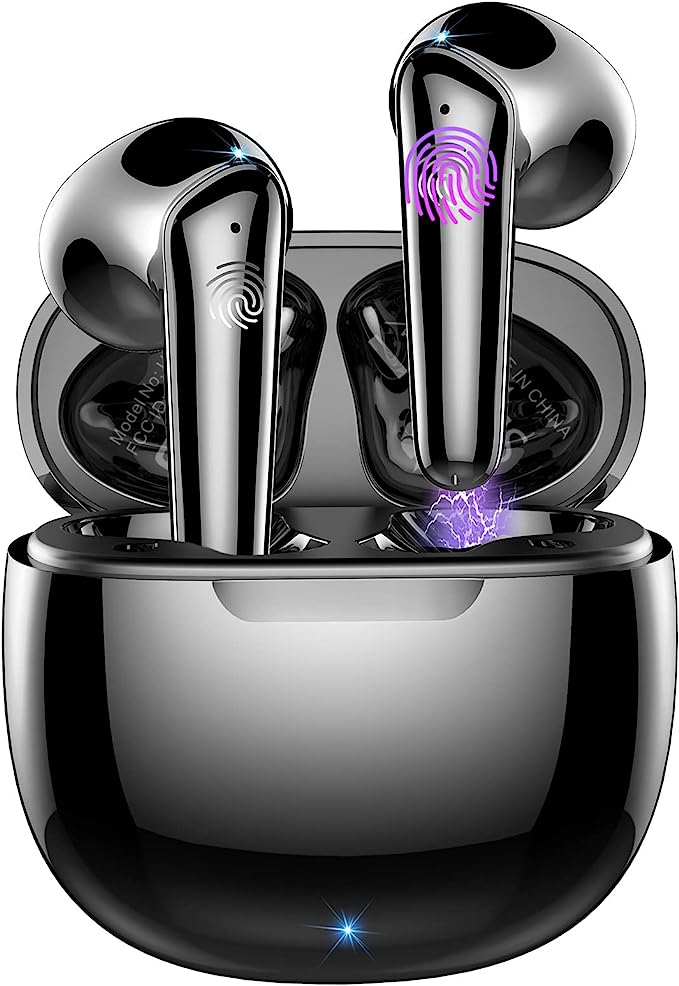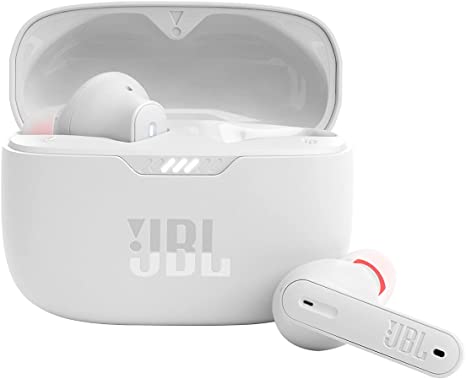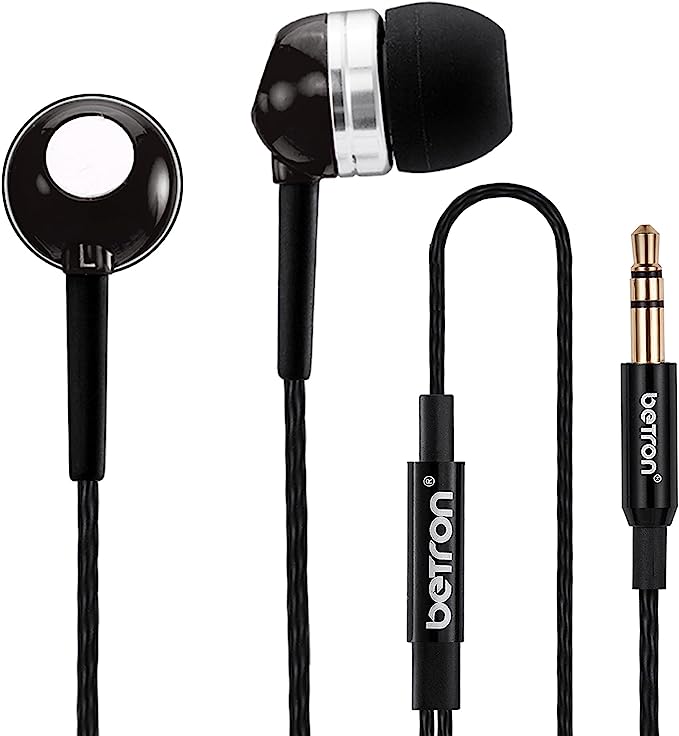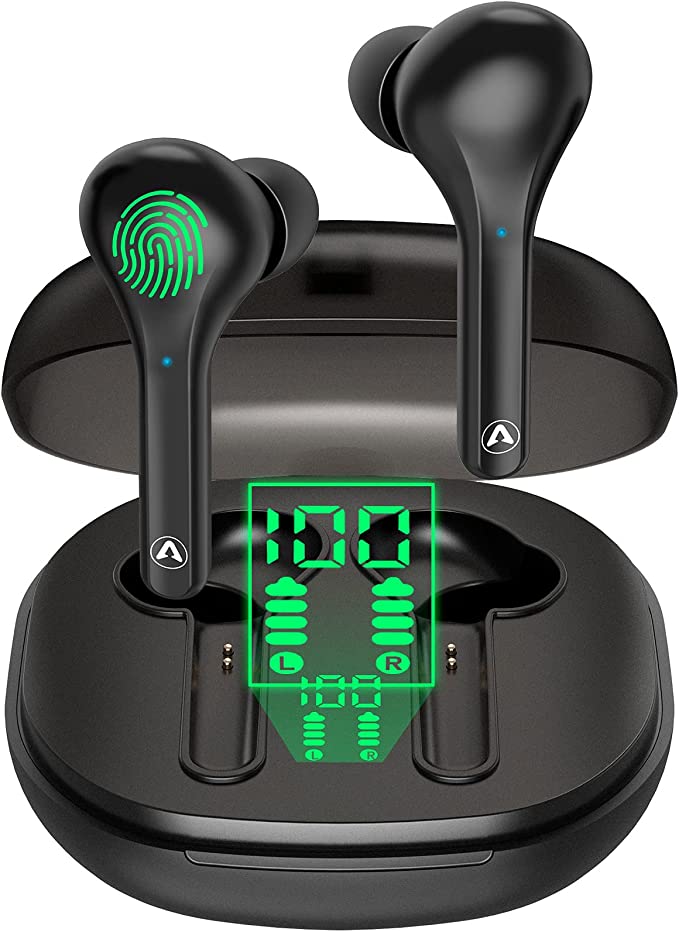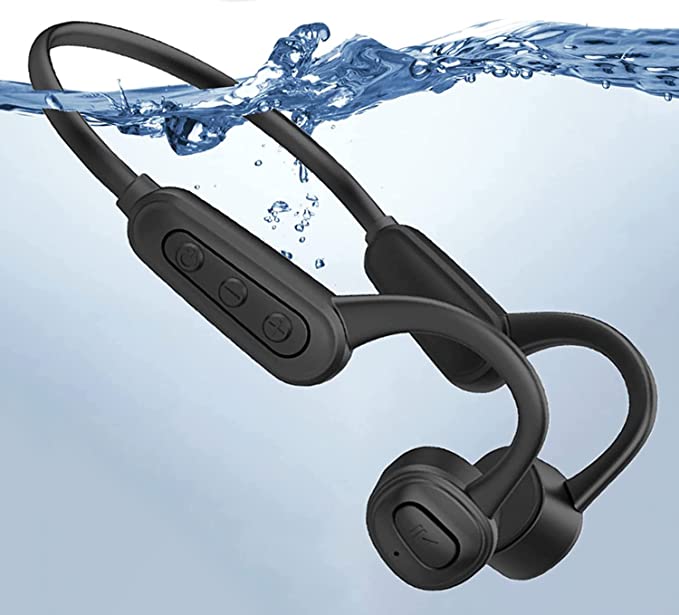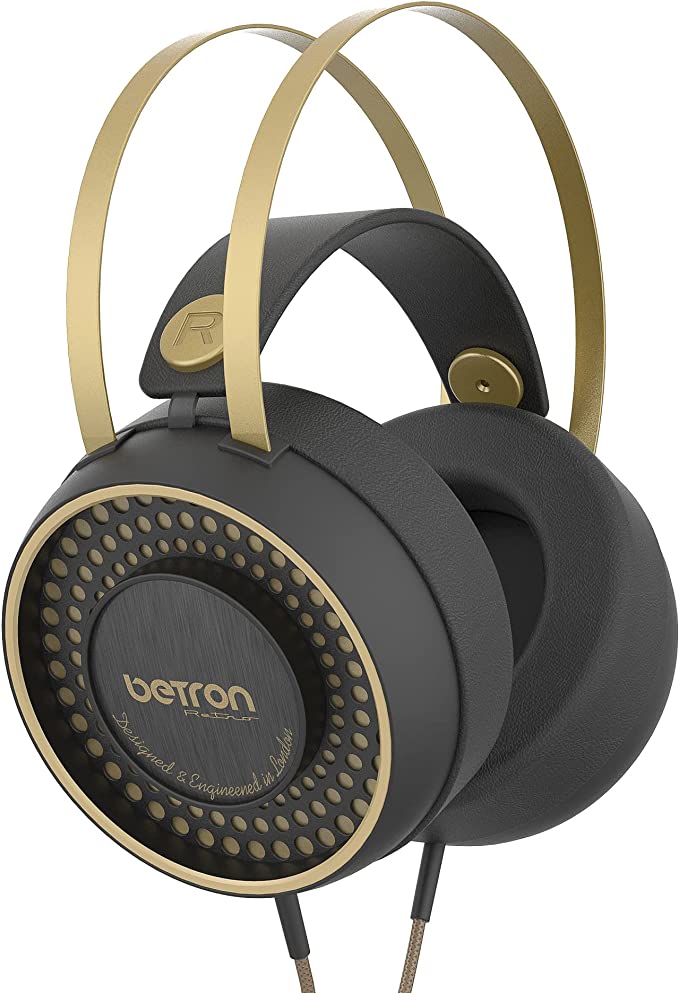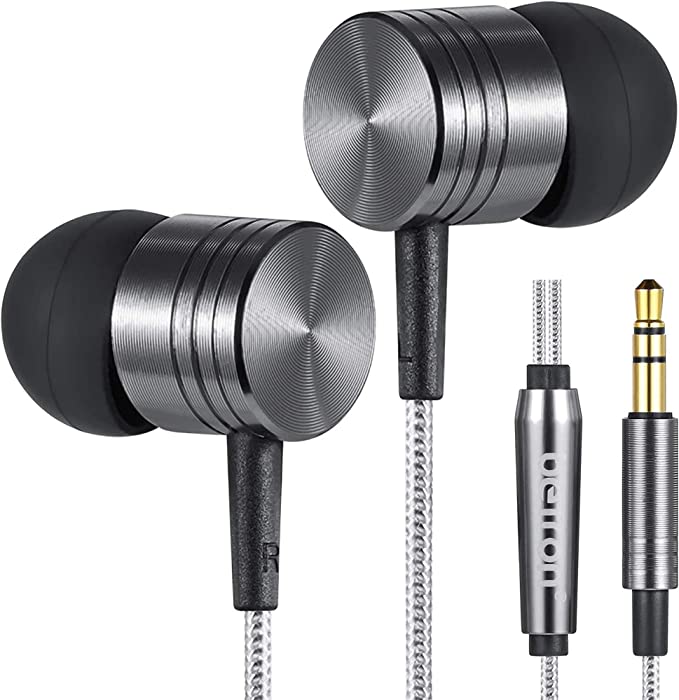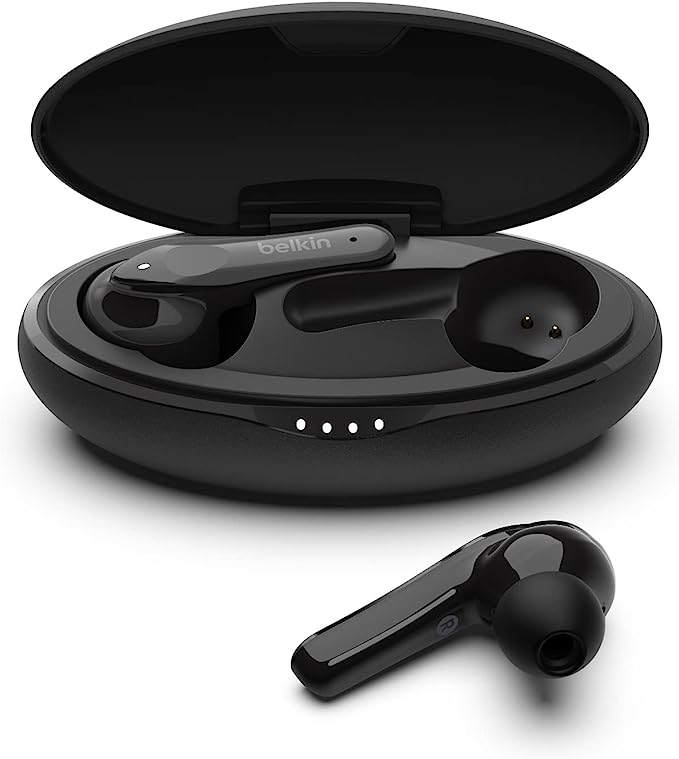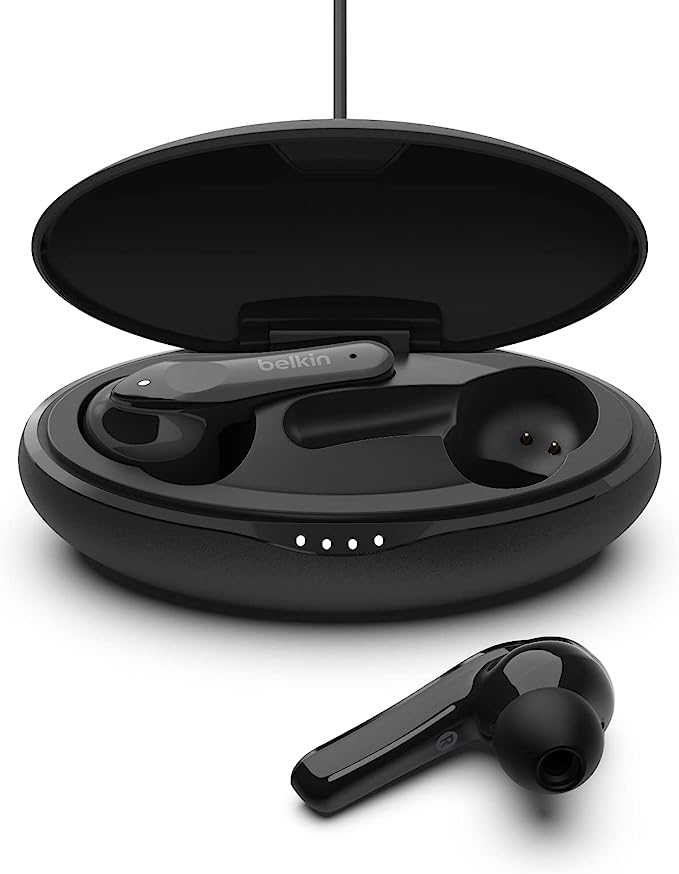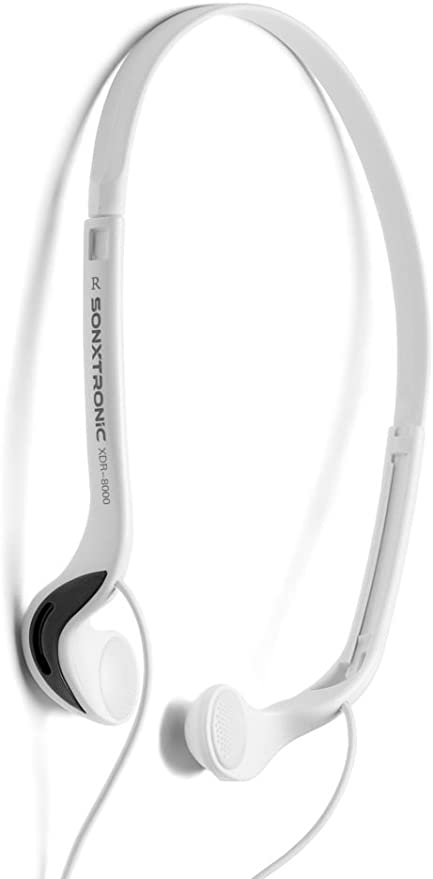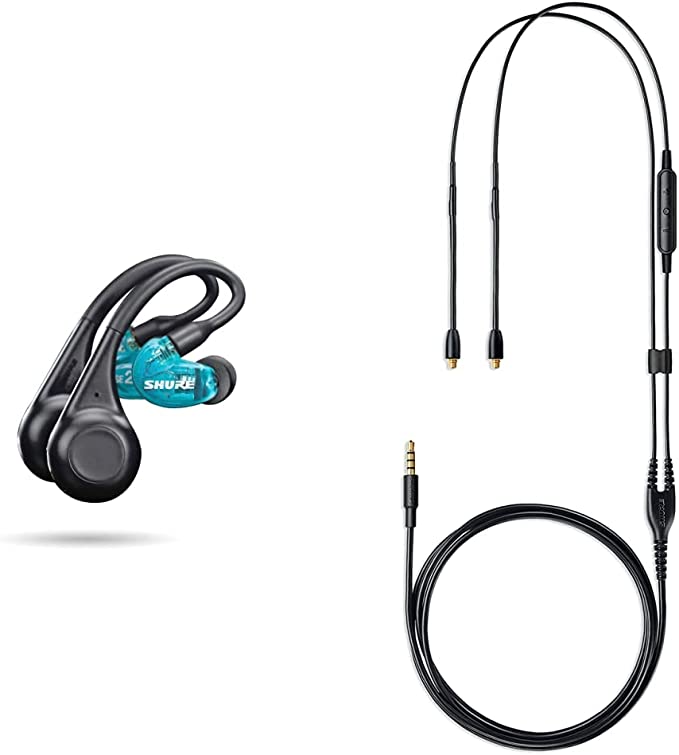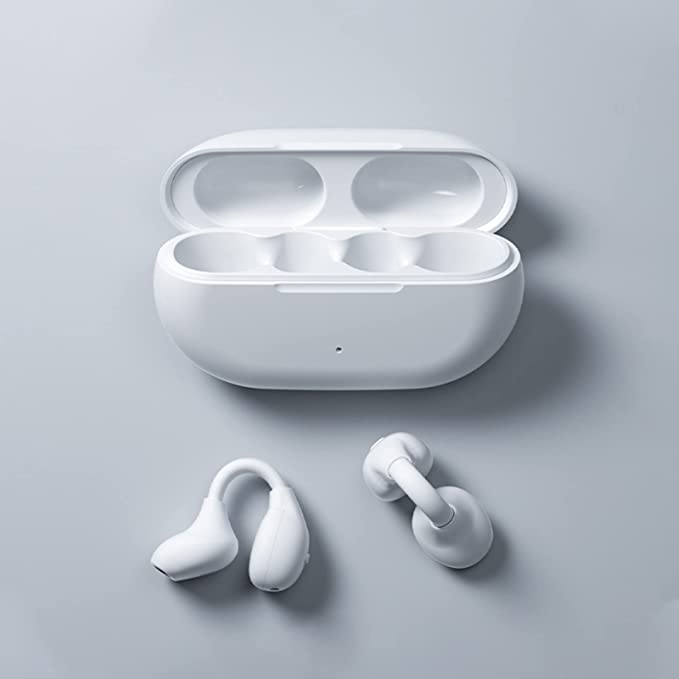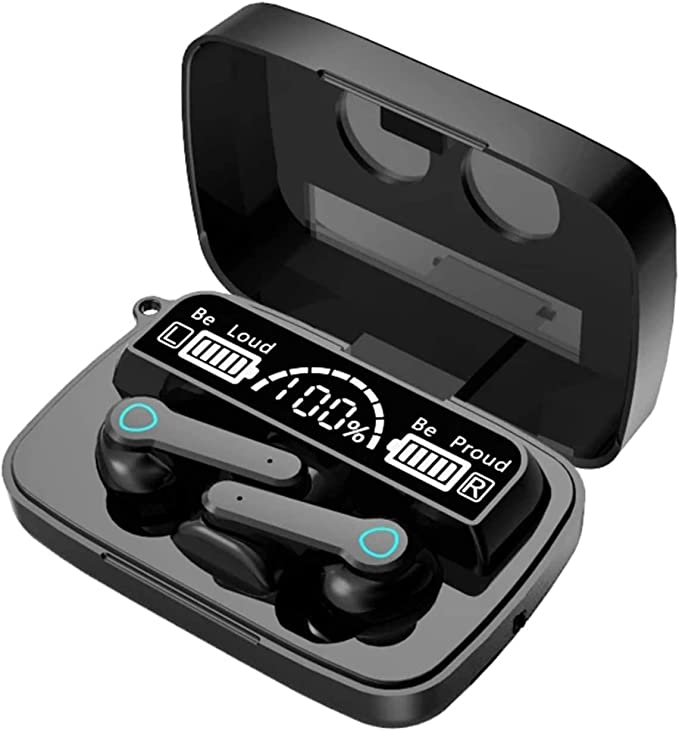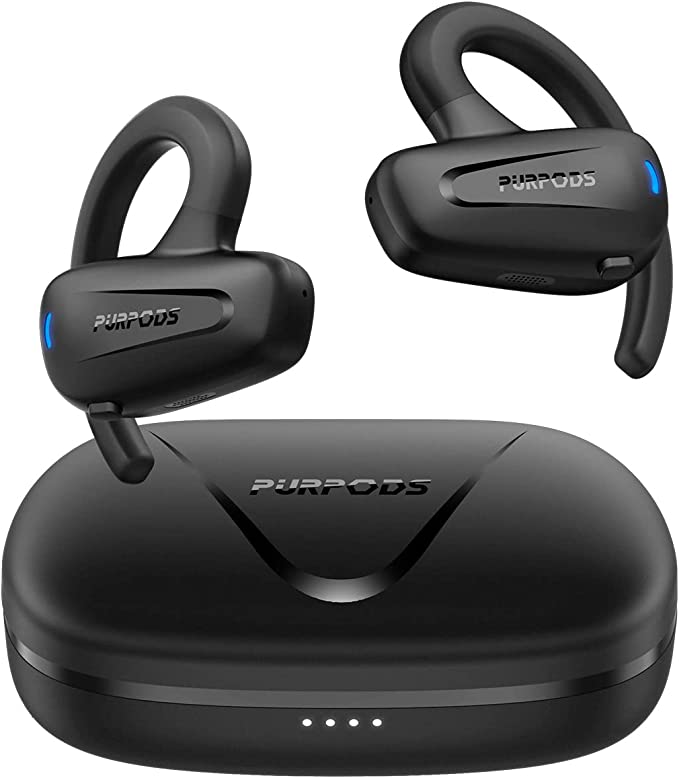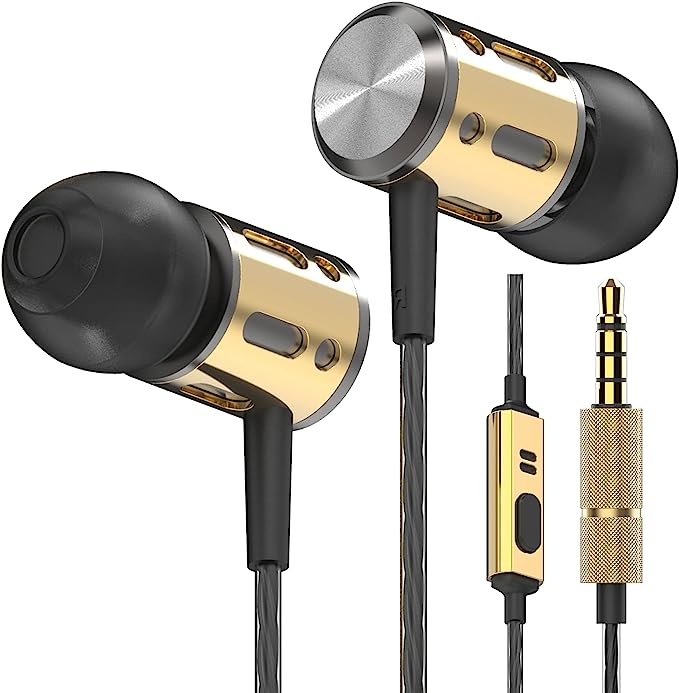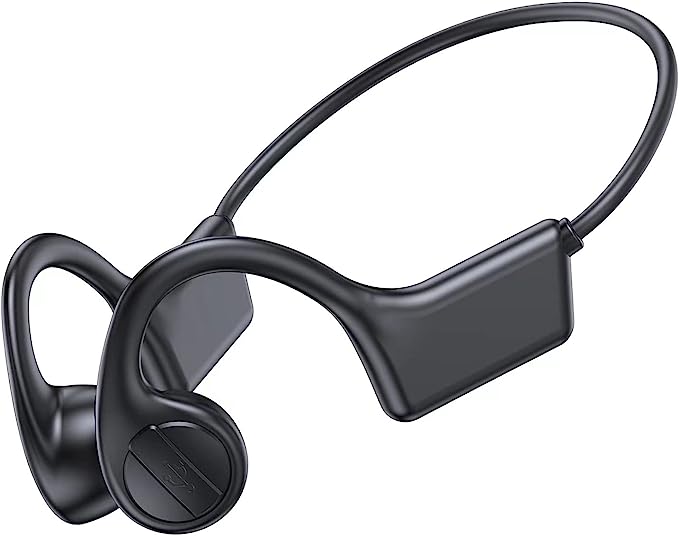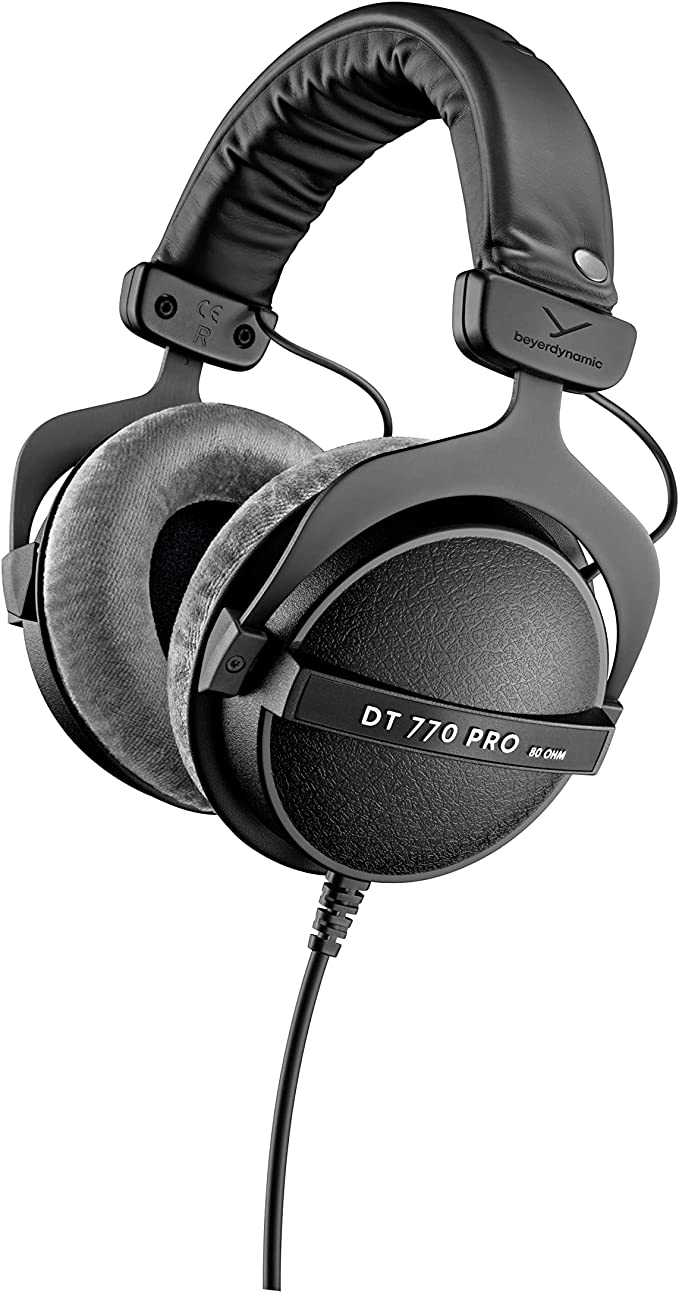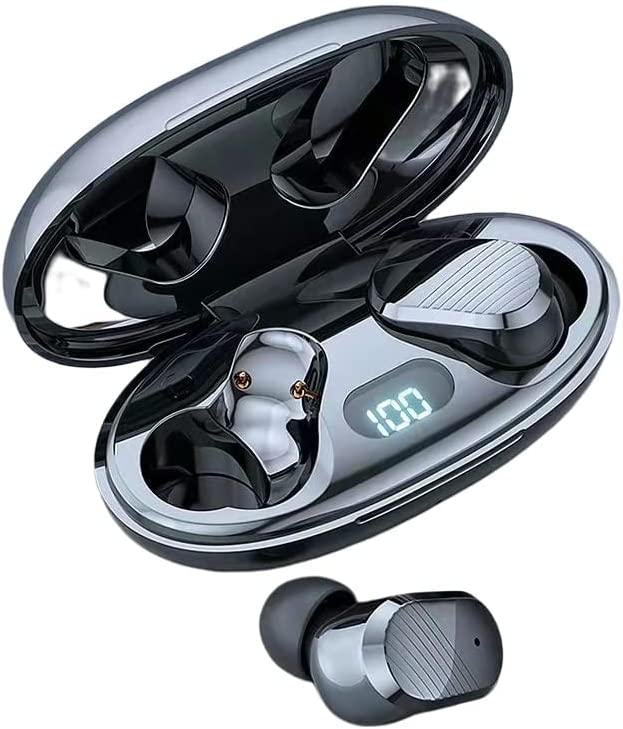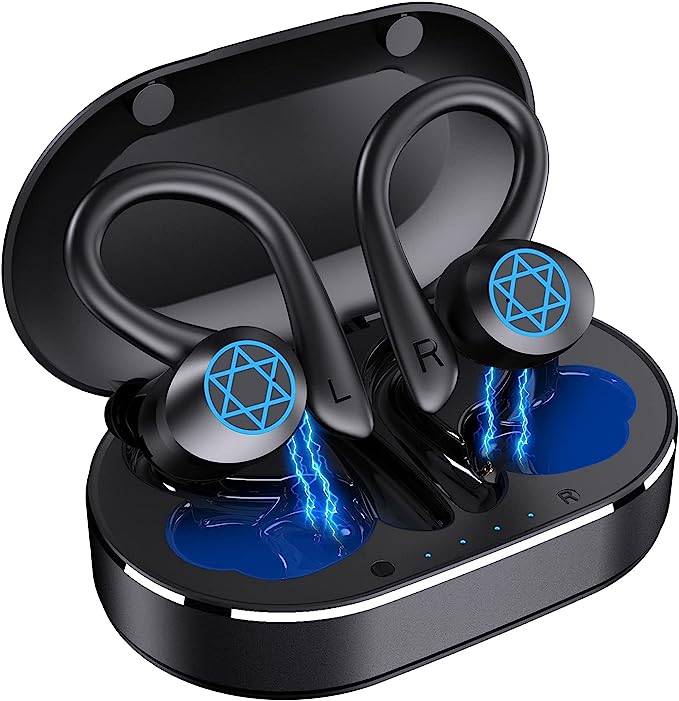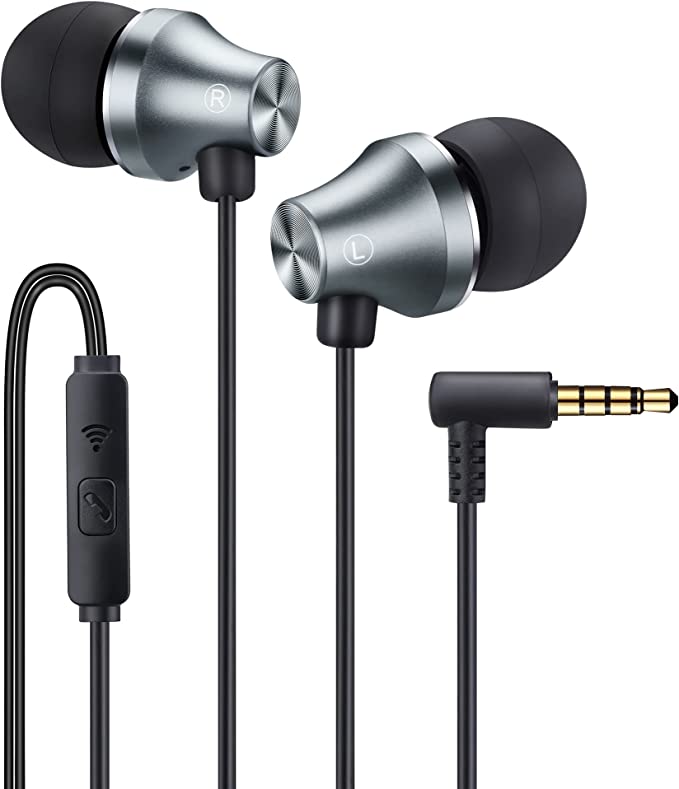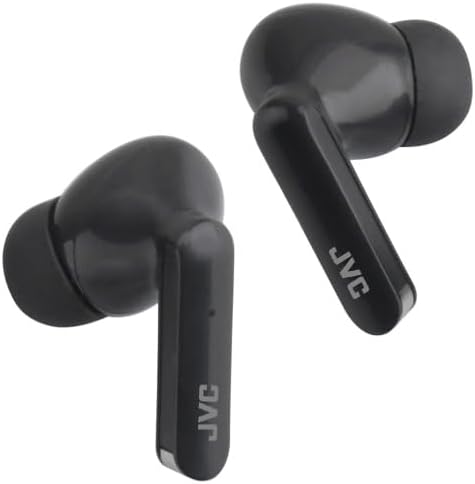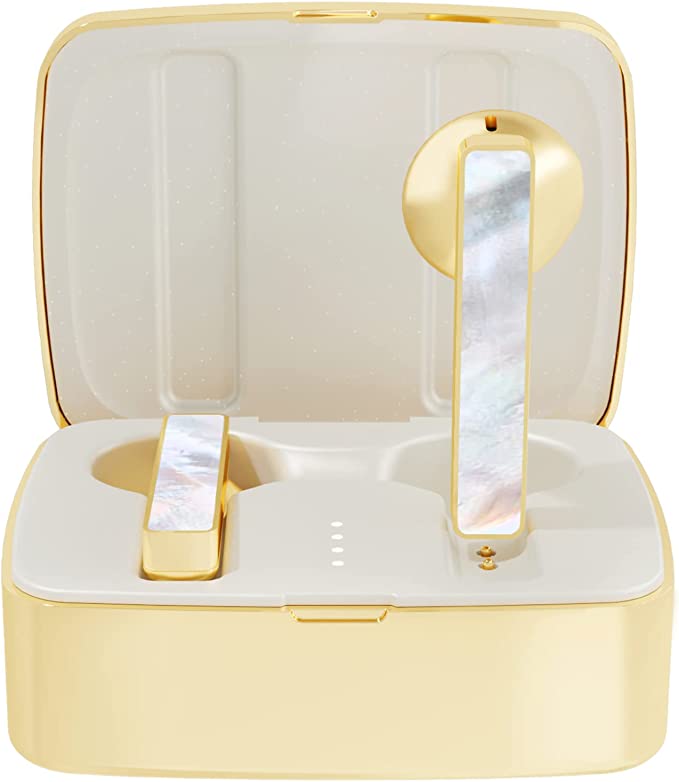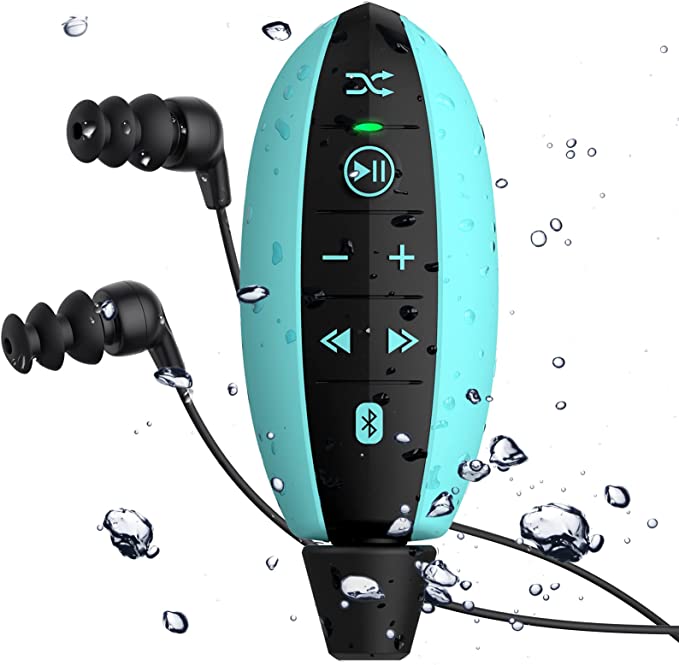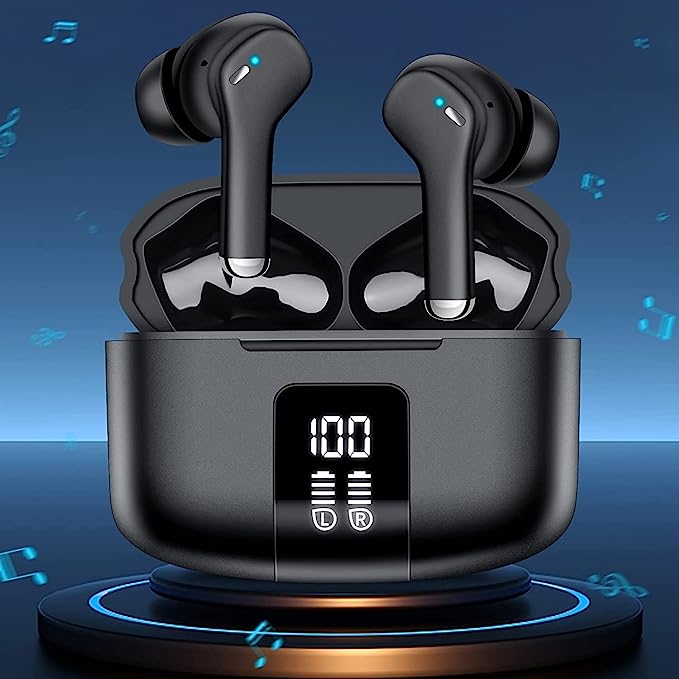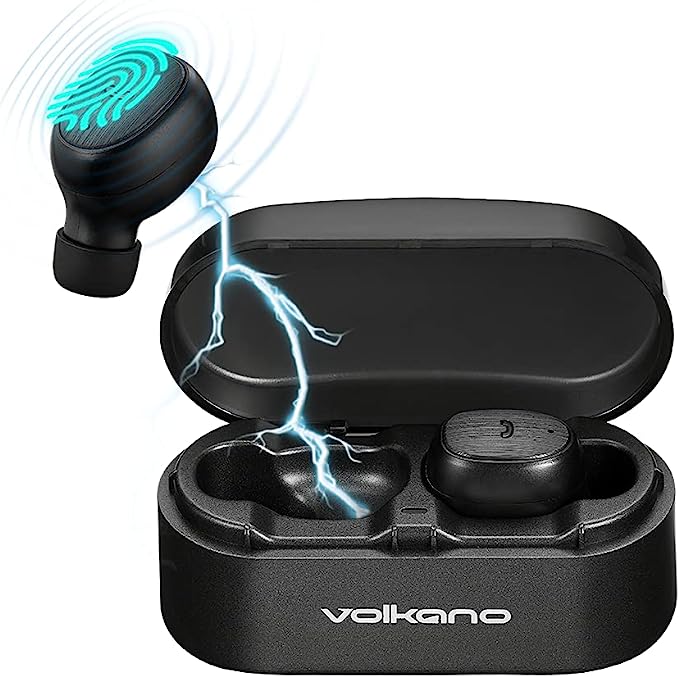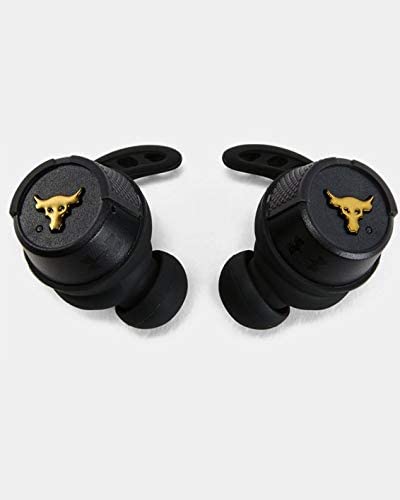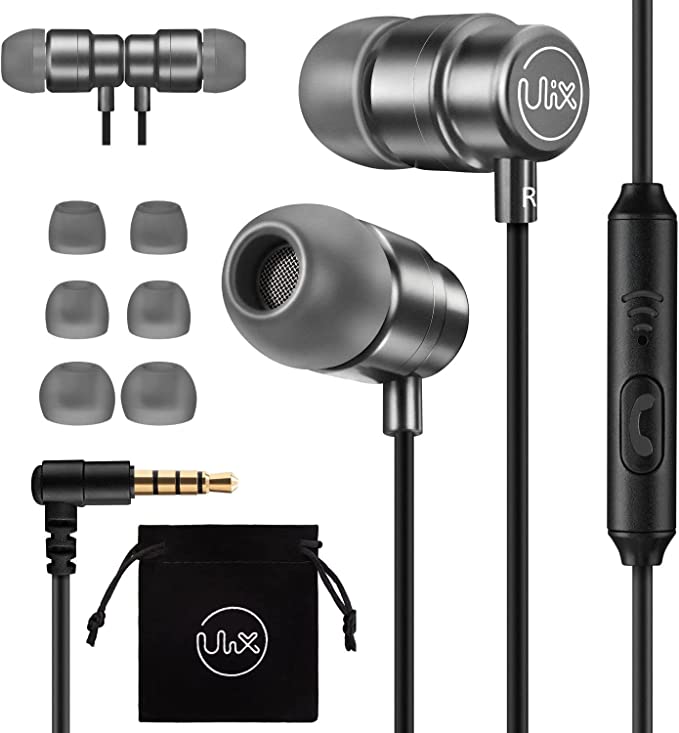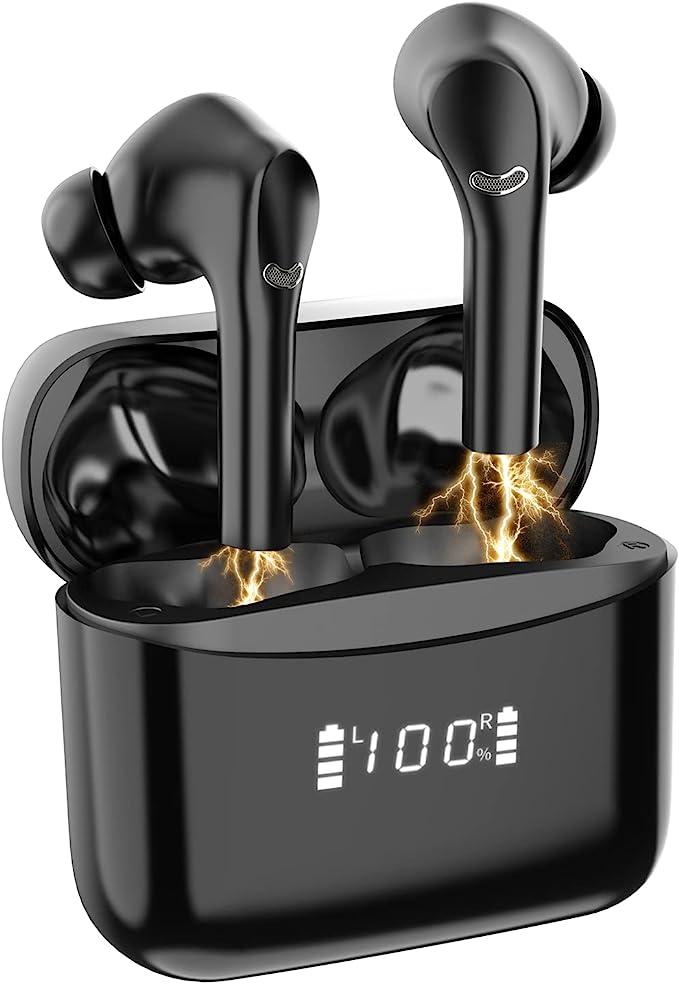GuavaPods A80 Wireless Earbuds: Crystal-Clear Sound & Unmatched Battery Life
Update on March 7, 2025, 2:44 p.m.
The Quest for Uninterrupted Sound: Why Your Earbuds Matter
We live in a world saturated with sound. From the moment we wake up to the time we drift off to sleep, we’re bombarded with auditory information – music, podcasts, phone calls, the hum of traffic, the chirping of birds. But how often do we truly listen? And how often is that listening experience compromised by the limitations of our technology? Tangled wires, dropped connections, muffled audio, and batteries that die at the most inconvenient moments – these are the common frustrations of the modern listener. The quest for seamless, high-quality audio is more than just a desire for entertainment; it’s about staying connected, focused, and immersed in our world. This is where the seemingly humble earbud steps in, a tiny device with a surprisingly complex job.
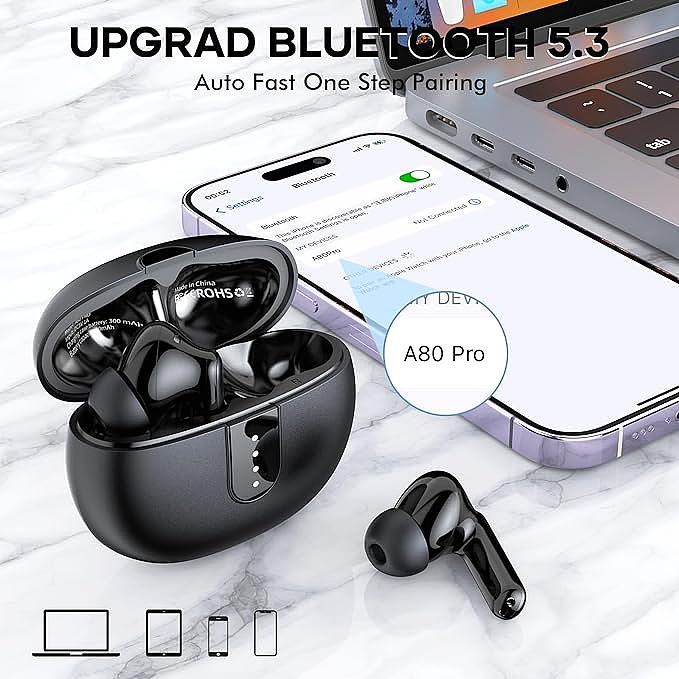
A Symphony of Airwaves: The Physics of Sound
Before we dive into the specifics of the GuavaPods A80, let’s take a moment to appreciate the fundamental science that makes all audio possible: sound itself. Sound is, at its core, a vibration. When an object vibrates – whether it’s a guitar string, a vocal cord, or the diaphragm of a speaker – it creates pressure waves in the surrounding medium, usually air. These waves travel outward, carrying energy.
When these pressure waves reach our ears, they cause our eardrums to vibrate. These vibrations are then transmitted through tiny bones in the middle ear to the cochlea, a fluid-filled structure in the inner ear. Inside the cochlea, thousands of tiny hair cells convert these vibrations into electrical signals that are sent to the brain, where they are interpreted as sound. The frequency of the sound wave (how many times it vibrates per second, measured in Hertz) determines its pitch – high-frequency waves sound high-pitched, and low-frequency waves sound low-pitched. The amplitude of the wave (the intensity of the vibration) determines its loudness, measured in decibels (dB). The human ear is a remarkably sensitive instrument, capable of detecting a vast range of frequencies and amplitudes.

Inside the GuavaPods A80: Deconstructing the Technology
The GuavaPods A80, like all wireless earbuds, are marvels of miniaturization. Packed into their compact design is a complex interplay of components working together to deliver sound wirelessly and efficiently.
The 13mm Dynamic Driver: Bigger Isn’t Always Better, But…
The heart of any earbud is its driver, the component that converts electrical signals into sound waves. The GuavaPods A80 utilize a 13mm dynamic driver. Dynamic drivers are the most common type of driver found in headphones and earbuds. They work on the principle of electromagnetic induction. A coil of wire (the voice coil) is attached to a diaphragm (a thin, flexible membrane). When an electrical signal passes through the voice coil, it creates a magnetic field that interacts with the magnetic field of a permanent magnet. This interaction causes the voice coil, and thus the diaphragm, to move back and forth, creating pressure waves in the air – sound.
The size of the diaphragm, in this case, 13mm, does play a significant role. While bigger isn’t always better (other factors like diaphragm material and driver tuning also matter), a larger diaphragm can generally move more air. This can result in a more powerful bass response and a wider soundstage – the perceived spatial location of sounds in a recording. Imagine the difference between hitting a small drum versus a large bass drum; the larger drum produces a deeper, more resonant sound because it can displace more air.
Bluetooth 5.3: The Invisible Bridge Between Device and Ears
The GuavaPods A80 rely on Bluetooth 5.3, the latest iteration of the ubiquitous wireless communication standard. Bluetooth uses radio waves in the 2.4 GHz frequency band to transmit data over short distances. Think of it as an invisible cable connecting your earbuds to your phone, tablet, or computer.
Bluetooth 5.3 offers several key advantages over previous versions:
- Lower Latency: Latency refers to the delay between when a sound is generated and when you hear it. Lower latency is crucial for video and gaming, where even a slight delay can be noticeable and disruptive. Bluetooth 5.3 significantly reduces latency, making for a more synchronized audio-visual experience.
- Enhanced Stability: Bluetooth 5.3 incorporates improvements that make the connection between your earbuds and your device more robust and less susceptible to interference. This means fewer dropped connections and a more reliable listening experience, especially in environments with many other wireless devices.
- Improved Power Efficiency: Bluetooth 5.3 is designed to consume less power, which translates to longer battery life for your earbuds. This is achieved through various optimizations in how data is transmitted and received.
- Connection Subrating: One of the key improvements in Bluetooth 5.3 is connection subrating. This feature allows devices to quickly switch between low-duty and high-duty cycles, further improving power efficiency without sacrificing connection quality.

ENC vs. ANC: The Battle Against Background Noise
The GuavaPods A80 feature Environmental Noise Cancellation (ENC), specifically designed for clearer phone calls. It’s important to distinguish ENC from Active Noise Cancellation (ANC).
- ENC (Environmental Noise Cancellation): ENC primarily targets outgoing audio – the sound of your voice during calls. It uses multiple microphones (four, in the case of the A80) to pick up both your voice and the surrounding ambient noise. Sophisticated algorithms then process this audio, filtering out the background noise and enhancing your voice. This ensures that the person on the other end of the call hears you clearly, even if you’re in a noisy environment.
- ANC (Active Noise Cancellation): ANC, on the other hand, targets incoming audio – the sounds you hear. It uses microphones to detect ambient noise and then generates an “anti-noise” signal – a sound wave that is 180 degrees out of phase with the incoming noise. When these two waves meet, they effectively cancel each other out, reducing the amount of ambient noise you hear. ANC is more effective at blocking out consistent, low-frequency sounds like the hum of an airplane engine or the drone of traffic.
The GuavaPods A80 do not feature ANC, focusing instead on providing clear call quality through ENC. This is a common trade-off, especially in more affordable earbuds, as ANC technology is more complex and expensive to implement.
IPX7: Defying the Elements, One Droplet at a Time
The IPX7 rating on the GuavaPods A80 indicates their level of water resistance. IP (Ingress Protection) ratings are a standardized way of classifying the degree of protection provided by enclosures for electrical equipment. The “X” in IPX7 means that the device has not been tested for dust resistance. The “7” indicates that the earbuds can withstand immersion in up to 1 meter of water for 30 minutes.
This means you can confidently wear your GuavaPods A80 during workouts, in the rain, or even while showering (though prolonged submersion is not recommended). It’s important to note that IPX7 protects against water, not other liquids like sweat or salt water. Sweat, in particular, can be corrosive over time, so it’s always a good idea to wipe down your earbuds after a workout.
Power Play: Understanding Battery Life in Wireless Earbuds.
The GuavaPods A80 boast an impressive 50-hour battery life with the charging case. This is achieved through a combination of factors:

- Efficient Bluetooth Chip: As mentioned earlier, Bluetooth 5.3 is more power-efficient than previous versions.
- Optimized Circuitry: The internal electronics of the earbuds are designed to minimize power consumption.
- Lithium Polymer Battery: The earbuds and the charging case use lithium polymer (LiPo) batteries. LiPo batteries offer a good balance of energy density (how much energy they can store for their size), weight, and safety.
- Charging Case: The included charging case contains its own battery, that can recharge buds several times.
The charging case itself is typically recharged via a USB-C cable. The 1-hour charging time refers to the time it takes to fully charge the earbuds from the charging case, assuming the case has sufficient charge.
GuavaPods in the Real World
Let’s move beyond the technical specifications and consider how the GuavaPods A80 perform in everyday situations.
The Commute Companion
Imagine you’re on a crowded bus or train, surrounded by the cacophony of city noise. The ENC technology in the GuavaPods A80 might not completely eliminate all background sounds like ANC would, but it will significantly reduce the intrusion of surrounding conversations and traffic noise when on calls, allowing you to focus on your music, podcast, or audiobook. The long battery life ensures that your earbuds won’t die on you halfway through your journey.
The Workout Warrior
The IPX7 water resistance and secure fit of the GuavaPods A80 make them ideal for workouts. You can sweat without worrying about damaging the earbuds, and the ergonomic design helps keep them in place, even during high-impact activities.
The Focused Professional.
Whether you’re working from home or in a busy office, the GuavaPods A80 can help you stay focused. While they don’t offer ANC, the snug fit and the 13mm drivers provide decent passive noise isolation, blocking out some distractions. The clear call quality ensured by the four microphones and ENC technology makes them perfect for conference calls and online meetings.

A Deeper Dive (optional, but beneficial):
Material Science: ABS and its Impact
The GuavaPods A80 are constructed from Acrylonitrile Butadiene Styrene (ABS) plastic. ABS is a common thermoplastic polymer known for its toughness, rigidity, and impact resistance. It’s a relatively inexpensive material, which helps keep the cost of the earbuds down. From a sound perspective, ABS is a reasonably good choice, as it’s relatively dense and doesn’t resonate excessively, which could negatively impact sound quality. However, it’s not as acoustically inert as some higher-end materials like aluminum or certain types of wood.
Form and Function: The Ergonomics of Earbuds
The “in-ear” form factor of the GuavaPods A80 means that they sit directly in your ear canal. This design provides good passive noise isolation, as the ear tips create a seal that blocks out ambient sound. The effectiveness of this seal depends heavily on the fit of the ear tips. That’s why it’s crucial to choose the right size of ear tips (usually, multiple sizes are included). A good seal will not only improve noise isolation but also enhance bass response. If the ear tips are too small, the bass will sound weak; if they’re too large, the earbuds will be uncomfortable and may not fit securely.
Beyond the A80: The Future of Wireless Audio
The world of wireless audio is constantly evolving. We can expect to see continued improvements in Bluetooth technology, with even lower latency, higher bandwidth (allowing for higher-resolution audio), and improved power efficiency. ANC technology is also becoming more sophisticated and more affordable, making it more likely to appear in budget-friendly earbuds. We might also see more earbuds with features like spatial audio, which creates a more immersive, three-dimensional listening experience.
Final Thoughts: Informed Listening
The GuavaPods A80 are a solid example of how far wireless earbud technology has come. They offer a compelling combination of features – good sound quality, long battery life, a secure fit, water resistance, and clear calls – at an affordable price. While they may not have all the bells and whistles of high-end models, they provide a reliable and enjoyable listening experience for everyday use. By understanding the science behind the technology, we can appreciate the ingenuity packed into these tiny devices and make more informed choices about the audio products we use.
